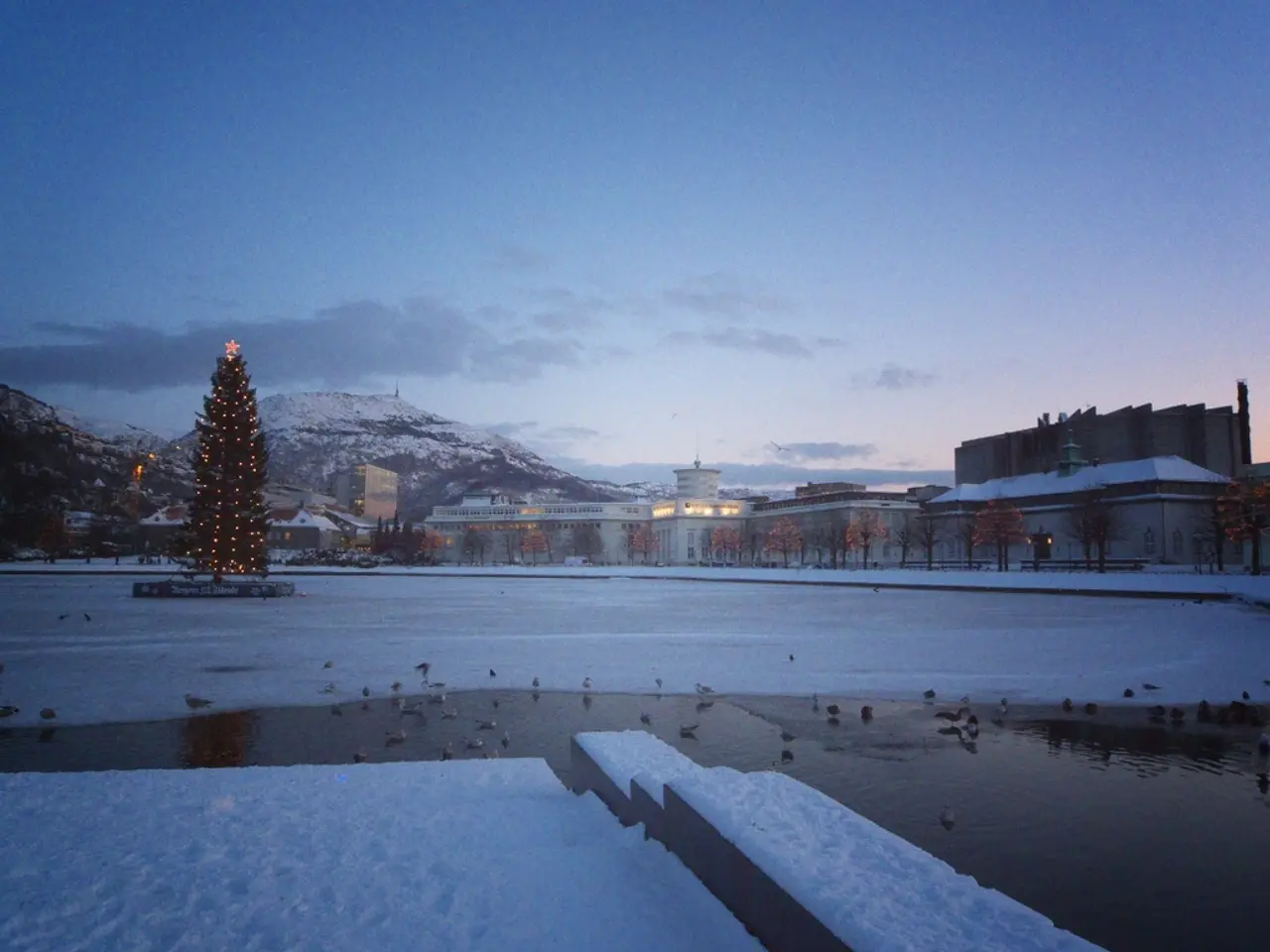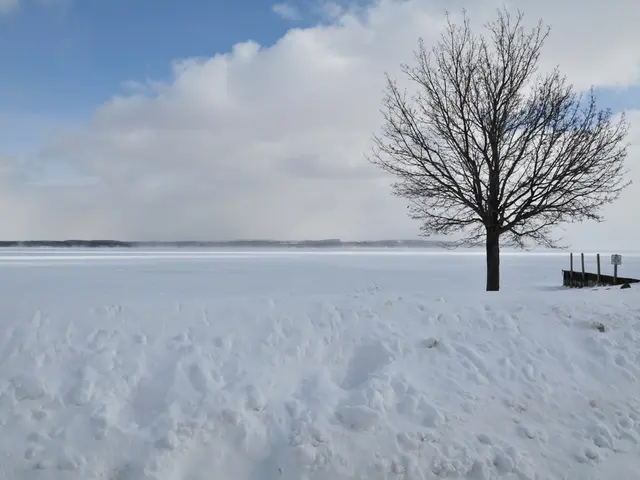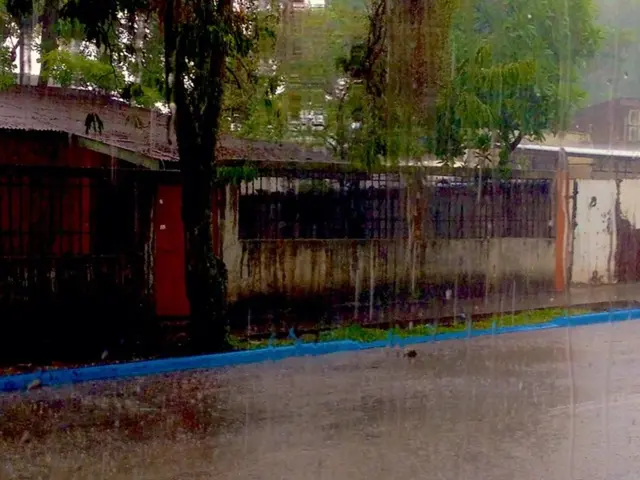In July 2025, Komi experienced a temperature drop of 5 degrees.
In the heart of Russia, the Komi territory experienced an unusual weather phenomenon in July, with sharp temperature contrasts that defied the norm for the warmest month of the year.
The unusual weather patterns were primarily caused by the interaction of cyclones, Arctic anticyclones, and varying precipitation patterns. Cyclones, driving warm air northward from lower latitudes, increased temperature and precipitation, while Arctic anticyclones brought cold, stable air masses from the Arctic, producing pronounced temperature gradients.
During the first ten days of July, the region was influenced by cyclones with active thunderstorm activity. Heavy rainfall of up to 41 mm in 12 hours was recorded in some areas, leading to increased humidity and cloud cover. This, in turn, reduced solar heating, causing cooler conditions.
Conversely, the second ten days were the coldest, with average temperatures below normal by 4-5°C in northern and southeastern regions, and by 3°C in southwestern regions. Minimum temperatures during this period dropped significantly in some parts of the republic, especially in the north, where they were as low as -1-2°C. The Arctic anticyclone significantly influenced the weather conditions during these days, with minimum temperatures ranging from 4-10°C.
The extreme southwest of Komi was 1°C below normal average temperatures in July. Meanwhile, the Ust-Vymsky district experienced 137% of normal precipitation during the period, while most of the territory experienced below-normal precipitation.
The Syktyvkar district, like many other regions in Komi, received 118% of normal precipitation during the period. Wind gusts of up to 17 m/s were recorded in some areas during the first ten days of July.
Precipitation levels varied across different districts during the period, with some districts receiving above-normal amounts. For instance, the Ust-Vymsky district experienced significantly higher precipitation than other regions.
In conclusion, the dynamic between cyclonic and anticyclonic systems is critical in shaping the temperature contrasts and overall weather variability during July in Komi. While the detailed studies specific to Komi’s 2025 July weather are part of recent research publications, the general meteorological principles of cyclone and anticyclone influence on temperature extremes and precipitation-driven modulation remain consistent.
The weather anomalies in Komi territory in July were primarily due to the interaction of cyclones, Arctic anticyclones, and varying precipitation patterns, which are fundamental aspects of climate-change and environmental-science. The extreme temperature contrasts defying the norm for the warmest month were caused by cyclones driving warm air northward and Arctic anticyclones bringing cold air from the Arctic, resulting in temperature gradients.








